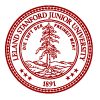Openmixer Manual
The OpenMixer hardware and software in the Listening Room is controlled through two USB controllers connected to the OpenMixer computer. Here is a description of the overall controls: The controller on the left controls the input source selection, level setting of each input channel and input level metering for each channel. The controller on the right controls the routing of each selected input channel to each one of the possible 24 output channels, the Ambisonics decoder mode and sampling rate selection. Each input source in OpenMixer can independently function in one of two main modes of operation. An input source set to the "Normal" mode will be able to route (with gain control) each input channel of each input source to one or more speakers. An input source that is set to the "Ambisonics Decoder" mode is assumed to be already encoded in Ambisonics and is automatically routed to Ambisonics decoders that are properly calibrated for the Listening Room speaker setup. More than one input source can be routed at the same time to the outputs, independently of other input sources, and different sources can be in Normal or Ambisonics Decoder mode at the same time. See the next sections for detailed instructions on how to use each one of the modes. |

